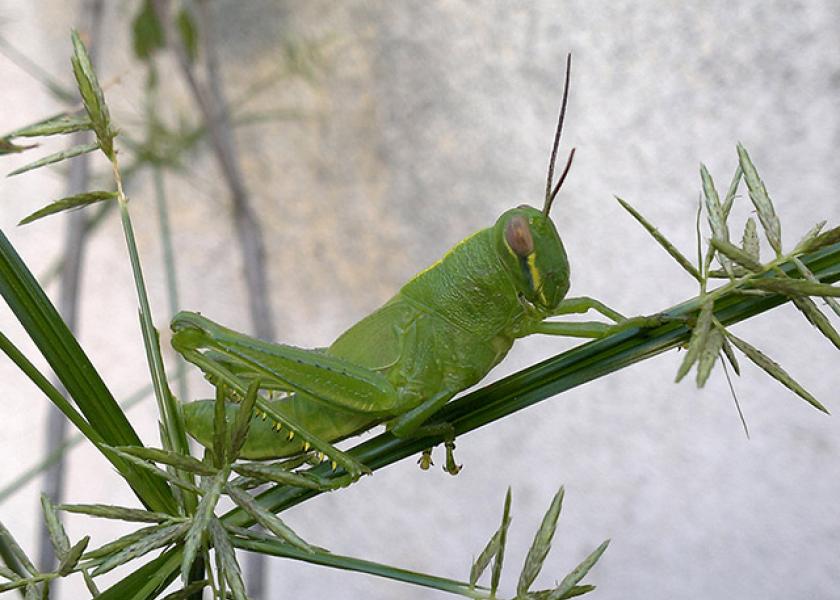Anticipating Grasshopper Impact for the Grazing Season

By: Roger Gates, Professor & SDSU Extension Rangeland Management Specialist
Developing plans to allocate the livestock feed available from pasture resources is essential to optimize pasture use and minimize associated costs. Useful plans are made in advance and anticipate adjustments that may be needed to respond to changes during the growing season. Modifying the intensity (e.g. animals per pasture) and duration (grazing days per pasture) will most often be dictated by growing conditions, primarily rainfall. Anticipating more severe conditions (i.e. drought, flood, hail, fire) requires contingency plans, and having them in place may reduce the impact of strong emotions associated with disaster conditions.
When grasshopper populations reach high densities, the resulting impact on pasture vegetation can be devastating. The USDA-Animal and Plant Health Inspection Service personnel conduct adult grasshopper surveys annually in late summer and fall. These surveys provide an “early warning” about the potential for grasshopper infestations in the following growing season. An iGrow Fact Sheet, Grasshopper Outlook on Rangelands: 2015 reports findings from the most recent survey. Contingency plans responding to grasshoppers might include pesticide control. Decisions should be made based on the value of the feed resource and the cost of the control measures which are outlined in detail in this Fact Sheet.
Survey results suggested a low probability of severe grasshopper damage in 2015. However, that is not a guarantee and a carefully planned contingency response will remain valuable and can easily be updated should conditions change.







